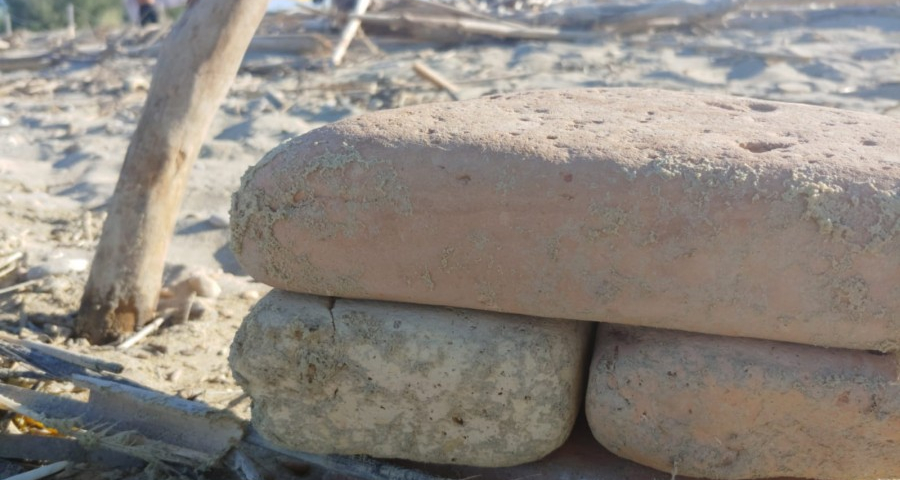Prophecy and history /5 - We begin our downfall when the house of power becomes larger than the place of God
by Luigino Bruni
published in Avvenire 30/06/2019
« The first word pronounced by God on Sinai was Anoki: "I am". In this case the Eternal did not use Hebrew but the Egyptian language: as the king who addressed his son returning home after a long period of time spent at sea, speaking to him in the language he had learned in a foreign land, so the Eternal chose the language that Israel spoke at that time. »
Louis Ginzberg, The Legends of the Jews
The beginning of the construction of Solomon’s temple contains many precious elements to understand the meaning of that great work and of ours. And it tells us what the itinerary of every good life must consist of.
The story of the construction of the Temple of Solomon is the narrative and theological centre of the Books of Kings and of the entire sapiential history from Genesis all through the destruction of Jerusalem to the exile. We must read these pages knowing that we are entering different and sacred grounds, and then take off our shoes if we want to recognize the voice of this bush. The story narrates facts that took place about five centuries before the text was composed. The author lived during the Babylonian exile. The temple he had seen was hence the one just destroyed and burned by Nebuchadnezzar. The gold, the gold which had just been melted by the fires or was once part of the furnishings broken by the Babylonians and transported to their temples. Not one stone remained of all that beauty of which we will soon be reading.
To really understand the spirit of these difficult pages let’s try to make an intellectual experiment. Let's identify ourselves with the soul of a man who has to make a video today by putting together old footage from his wedding and scenes of the wedding party. His wife is gone, she has left. The separation took place because of his (the husband's) wrong doing, because of his betrayals - this is the theological reading that those writers gave to the destruction of the temple and the exile. She, "the delight of his eyes" (Ezekiel), is no longer there, and it is all his fault. And then, with those feelings, the man sees in the video how good and beautiful that bride was (the Hebrew word tov - beautiful and good - appears many times in these chapters). With a final surprise: the Bible will tell us that the bride, who remained faithful, will not only be able to return home but will be able to return as beautiful as she appears in the wedding video. And while giving us this hope, it becomes a companion in the non-returns of our life and in the lonely and desperate visions of our own home movies.
The narration of the construction of the temple begins with a description that closely resembles the condition of the Jews in the brick factories of Egypt: «King Solomon conscripted labourers from all Israel - thirty thousand men» (1 Kings 5,13). The great works of antiquity (and perhaps even many of ours) should be told by the workers who made them. Even when forced labour is used to build cathedrals, we cannot console ourselves with the beautiful and ancient story of The pilgrim and the three stone breakers, where the third stonebreaker replied: «I am building a cathedral». Although most of the tens of thousands of Solomon's men had known that they were smashing stones and working for the construction of the most beautiful temple, it is not true that that consciousness would have taken away the inhumanity and pain of forced and non-regulated labour (perhaps it would have only attenuated it on a different day). And it is both beautiful and important that the Bible wished to write and leave this glimpse of the workers and builders of its most important work with us. This narration of forced labour may not have existed at all. A later editor (priest or scribe) tried to amend and cancel this part (1 Kings 9,20), because those who enjoy temples and palaces do not like to remember the pain of those who built them, and do everything to forget it and make us forget as well. Instead, these verses survived and have become a "tombstone to the unknown worker", who through no choice of his own built the temple of Solomon and the biblical word through his sweat and tears. If we want to avoid making the Bible a mere uplifting read to cultivate mild pious and religious thoughts, we should read from time to time these great stories from the perspective of their hidden victims.
In addition to forced labour, at the beginning of the construction of the temple we also find a contract. Solomon uses the most suitable instrument for the construction of the temple, an agreement of reciprocity with Hiram, the rich king of Tyre: «So Hiram sent word to Solomon: “I have received the message you sent me and will do all you want in providing the cedar and juniper logs”… In this way Hiram kept Solomon supplied with all the cedar and juniper logs he wanted» (1 Kings 5,8-10). On his part, «Solomon gave Hiram twenty thousand cors of wheat as food for his household, in addition to twenty thousand baths of pressed olive oil. Solomon continued to do this for Hiram year after year» (1 Kings 5,11-12).
Forced labour and commercial exchange, hierarchy and consensus, vertical and horizontal relationships: the two elements that are still the basis of our economic system. Small and large works continue to be carried out thanks to stronger subjects who manage the direction of the work of weaker people, to satisfy the desires of those in charge of the exchange, in relationships of equality and reciprocity. But even here, we do not really see or narrate the freedom and equality of commercial exchanges, and we do not see or narrate all the non-reciprocity and the many obligations that are hidden behind the exchange between goods. We wear T-shirts, shoes, bags, we eat tomatoes and pasta, we use smartphones and tablets, we entrust our savings to the banks ..., carrying out the exchange on the basis of (a certain) freedom and (a certain) equality. But we do not (or do not want to) see the faces of the workers who produce those goods, who build our small and large cathedrals. We see too much of the goods (because there is a whole economic-financial empire that works day and night so that we see them), but we do not see enough of the little people hidden behind the shell of the things we consume. The Bible occasionally manages to make us glimpse the faces of those men and women, because afterwards once we close the Bible, we begin to look for them and see them in our markets.
«The year four hundred and eighty after the Israelites left the land of Egypt, the fourth year of Solomon's reign over Israel, in the month of Ziv, that is, in the second month, he began the construction of the temple of Yahweh. The temple built by King Solomon by the Lord was sixty cubits long, twenty wide, thirty cubits high» (1 Kings 6,1-2). A large building - a Jewish cubit measuring about 44 cm - but above all rich, beautiful and of great value: «Everything was cedar and no stone was visible. He built the shrine in the temple, in the innermost part, to place the ark of the Covenant of the Lord ... He overlaid it with the purest gold and built an altar of cedar ... And the whole hall was covered with gold in every part, and also overlaid the whole altar which was in the shrine with gold "(1 Kings 6,18-22).
We also meet an artist, called by name: «King Solomon sent to Tyre and brought Huram, whose mother was a widow from the tribe of Naphtali and whose father was from Tyre and a skilled craftsman in bronze. Huram was filled with wisdom, with understanding and with knowledge to do all kinds of bronze work» (1 Kings 7,13-14). Huram is a new Bezalel, the artist who had decorated the tabernacle in Exodus (Ex 31.2-3). The three words with which the text qualifies this artist as a bronze worker are very beautiful: full of wisdom, intelligence and knowledge (competence and expertise). Artistic creativity (and every kind of creativity) needs wisdom (in the biblical meaning of the term), which is an exquisitely spiritual gift, but also requires intelligence, that is natural talent, together with competence. You can start painting and sculpting with just one of these qualities (every mature vocation takes form over time), but the artistic vocation is fulfilled and bears great fruit only when wisdom, intelligence and competence work and create together.
Huram «cast two bronze pillars… He made the Sea of cast metal, circular in shape, measuring ten cubits from rim to rim and five cubits high… The Sea stood on twelve bulls, three facing north, three facing west, three facing south and three facing east. The Sea rested on top of » (1 Kings 7, 15-25). After the temple («He had spent seven years building it»: 1 Kings 6, 38), the king built his palace: «It took Solomon thirteen years, however, to complete the construction of his palace. He built the Palace of the Forest of Lebanon a hundred cubits long, fifty wide and thirty high» (1 Kings 7, 1-2).
The temple was sixty cubits long, the palace one hundred; the temple was twenty cubits wide, the palace fifty. When kings, even the wisest of them, begin to build a temple to praise and magnify God, they end up making royal palaces much larger than the temples. Maybe in good faith, often for good reasons, the palace goes beyond the temple in length and in width (maybe not in height, to avoid reaching higher than the highest but, humbly, on the same level). And this is another clue telling us that the construction of Solomon's masterpiece was also the beginning of his corruption.
The sapiential soul of the Books of Kings, very harsh on the monarchy and the kings of Israel, is able to interpret many things in this palace that exceeds the temple in size. The author of these pages is perhaps the same author of the pages of Genesis and Exodus in the days of the first love of Israel, when there was only a bare voice, a tent, and a wandering Aramaean who departed on the belief of a promise.
Every good life begins with a voice that calls us when we are still poor and simple, and we set off following that voice and its promise. Then, over time, worship, religion, and the construction of the temple arrive, and finally our palace built to be larger than the temple destined for God. And downfall begins. We spent our whole life building our cult, the "temple" and the "palace", and everyone praised and loved us for these works. Until the day that we would finally manage to understand that freedom, truth and love are found elsewhere, but we had forgotten it. Another voice surprises us in the night, in a dream or in a hospital bed. It is the voice of the first day, and we are able to recognize it. He orders us to dismantle the palace, the temple, to go back to being poor and getting back on the road. The salvation of adult life is a path going backwards, leading us from the palace back to the nomad tent. Because the subtle voices of silence cannot be heard in tall temples and large buildings. They can only speak when they are exactly at eye and heart level.
Download pdf article in pdf (222 KB)








